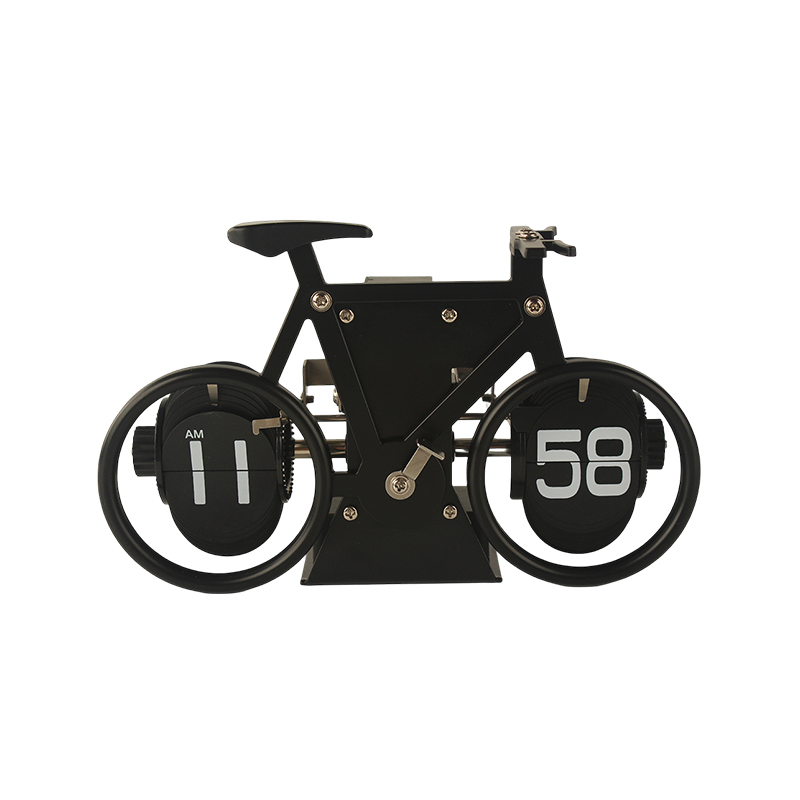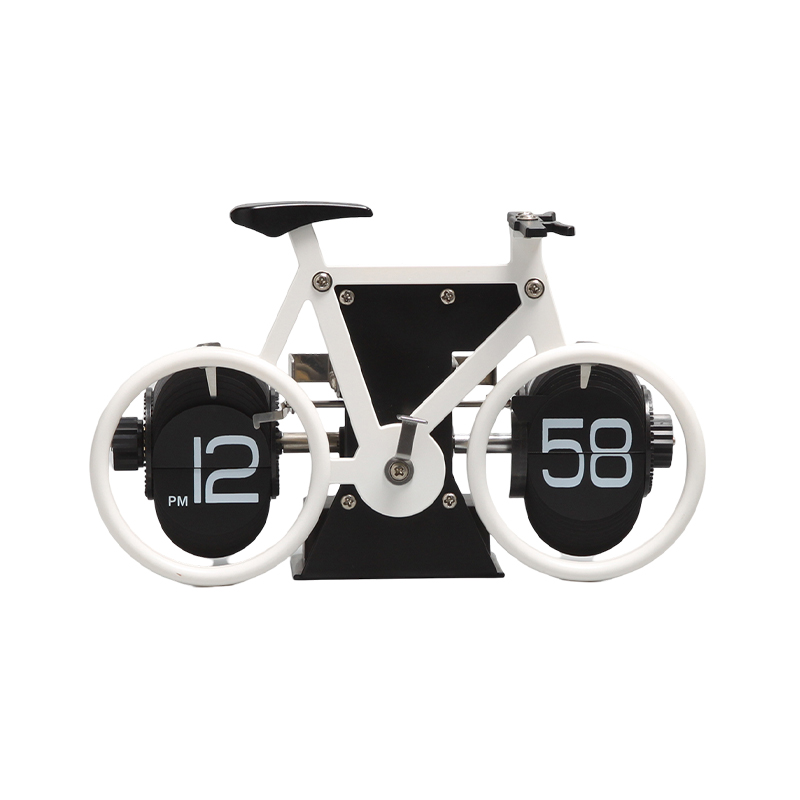In a flip clock mechanism, how can we optimize the gear ratio to reduce page-turning lag?
Release Time : 2025-09-17
The gear transmission system of a flip clock is the core component that drives the flipping of pages. The rationality of its transmission ratio directly affects the smoothness of the page-turning action. Jamming often arises from excessive gear meshing clearance, uneven torque distribution in the transmission chain, or sudden changes in inertia. Optimizing the transmission ratio requires a comprehensive approach encompassing gear module selection, stage configuration, material matching, and dynamic compensation to achieve smooth and efficient power transmission.
Gear module selection requires a balance between strength and meshing accuracy. A too small module results in insufficient tooth root strength, which can easily lead to jamming due to wear or fatigue fracture over long-term operation. A too large module increases inter-tooth clearance, generating impact loads during transmission. In actual design, the module range should be determined based on the clock size and load requirements. Small flip clocks (pages ≤15cm) typically use a module of 0.5-0.8mm to balance compactness and durability. Large clocks (pages >30cm) require a module of 1-1.5mm to ensure gear bending strength. Furthermore, the use of an involute tooth profile optimizes meshing characteristics. Its tooth profile ensures a constant transmission ratio and reduces speed fluctuations caused by tooth profile errors.
The configuration of transmission stages should adhere to the principle of "low speed, high torque, high speed, low torque." The flip clock's drive source (such as a stepper motor or spring) typically outputs high speed, low torque. This requires multiple gear reduction stages to reduce the speed to 0.5-2 rpm while simultaneously amplifying the torque to overcome the inertia of the leaf. A three-stage reduction transmission is a common solution: the first stage uses small-module gears for initial deceleration, the second stage uses medium-module gears to balance torque and volume, and the third stage uses large-module gears to directly drive the leaf-flipping shaft. The recommended transmission ratio for each stage is between 3:1 and 5:1 to avoid excessively large ratios in a single stage, which can lead to contact stress concentration on the tooth surfaces and cause wear or seizure.
Material matching is crucial for gear life and transmission stability. The drive gear (which directly meshes with the motor or spring) must withstand high-frequency impact loads. High-strength engineering plastics (such as POM) or powder metallurgy steel are recommended, as they offer superior wear and fatigue resistance compared to ordinary metals. Nylon or brass can be used for intermediate transmission gears, balancing self-lubrication with cost. The final drive gear (which directly drives the page-turning shaft) should be made of steel to ensure sufficient rigidity and deformation resistance. When pairing gears made of different materials, surface treatments (such as hard chrome plating or carburizing) are necessary to adjust the hardness difference and prevent the hard tooth surfaces from scratching the soft tooth surfaces. The elastic deformation of the soft tooth surfaces can also absorb some of the impact energy.
Dynamic compensation mechanisms can effectively mitigate sudden changes in inertial forces. During the start and stop phases of the page-turning operation, the gear system can generate inertial torque fluctuations due to uneven page mass distribution, leading to momentary jerking. Introducing elastic elements (such as torsion springs or rubber buffers) in the transmission chain can absorb some of the impact energy and smoother torque transmission. For example, a torsion spring can be installed between the final gear and the flip shaft. When the motor starts, the torsion spring is initially compressed to store energy, which is then gradually released once the pages begin flipping, avoiding the sudden speed changes caused by a rigid connection. During the stop phase, the spring's rebound force helps the pages precisely position themselves, reducing overshoot or rebound.
Assembly precision is the practical basis for optimizing transmission ratios. The clearance between the gear shaft and bearing must be controlled within a range of 0.02-0.05mm. Excessive clearance can cause loosening of the transmission chain, while too little clearance can increase frictional resistance. During installation, a directional assembly method should be used. This involves adjusting the gear phase so that the meshing point is located in the middle of the tooth width to avoid increased local wear due to uneven loading. Furthermore, regular lubrication (such as with silicone- or lithium-based grease) can reduce the friction coefficient on the tooth surface, minimize energy loss and heat generation, and further improve transmission smoothness.
Optimizing the gear ratio of a flip clock requires a balanced consideration of theoretical design and actual operating conditions. By selecting the module, configuring the number of stages, matching materials, dynamic compensation, and controlling assembly precision, the jamming rate can be significantly reduced, extending the equipment's service life. This process requires combining mechanical dynamics analysis with experimental verification, and continuously iterating and adjusting parameters to ultimately achieve accurate and reliable power transmission.







